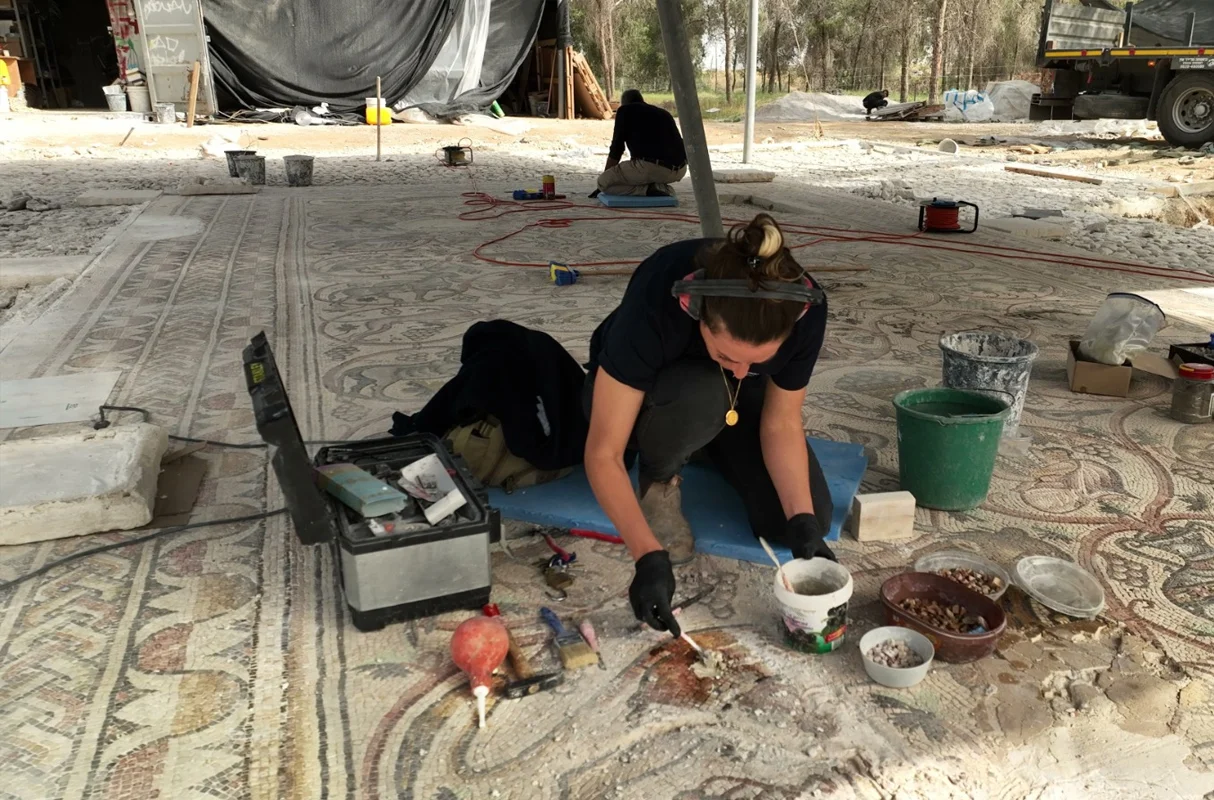A large Byzantine-era mosaic discovered in 1990 at the edge of Khirbat Be’er Shema, Israel, has been unveiled to the public for the first time.
Known as the Be’er Shema (Birsama) mosaic, it consists of 55 intricately decorated medallions that depict mythological figures, animals, hunting scenes, and everyday life.
Originally part of a large monastery that sustained itself through wine production, the site also contained a large winepress and storage facilities.
According to experts, the mosaic dates from around AD 324-638 when the region was part of Palaestina Secunda or Palaestina II, a province of the Byzantine Empire.
After its discovery in the 1990s, archaeologists reburied the site to protect it from erosion. However, over time, the mosaic began to deteriorate, prompting the Israel Antiquities Authority (IAA) to conserve and relocate it to a secure location within the Merhavim Council’s complex.

Shaike Lender, who co-led the recovery on behalf of the IAA, explained that the site was situated on the route of an ancient Nabataean-Roman spice trail through the desert, and later served as the last major population centre en route to the desert regions.
“The excavation showed that this was indeed a large settlement, on the order of several hundred dunams, that served travellers needing a safe place to spend the night and offering protection from potential attacks by raiders from the local Bedouin tribes,” said Lender.
The public unveiling ceremony was held earlier this month and was attended by Heritage Minister Amichai Eliyahu, Council Head Shay Hajaj, and Israel Antiquities Authority Director Eli Escusido.
Merhavim Regional Council Head Shay Hajaj said: “This beautiful mosaic is a living testimony to life that existed in the Negev some 1,600 years ago. It is another chapter in the story we are writing here in Merhavim—a story that connects past, present, and future.”
Header Image Credit : IAA
Sources : Israel Antiquities Authority

